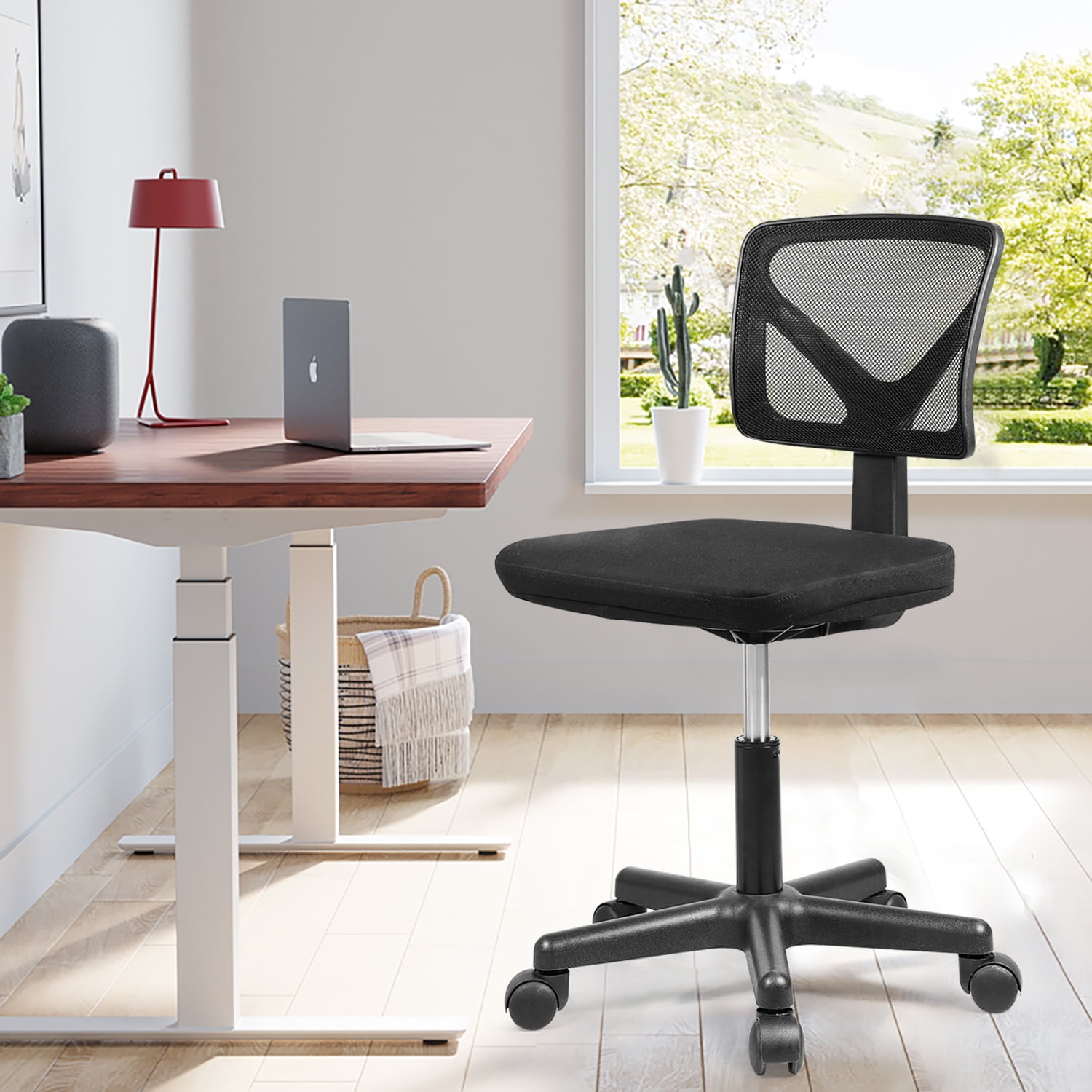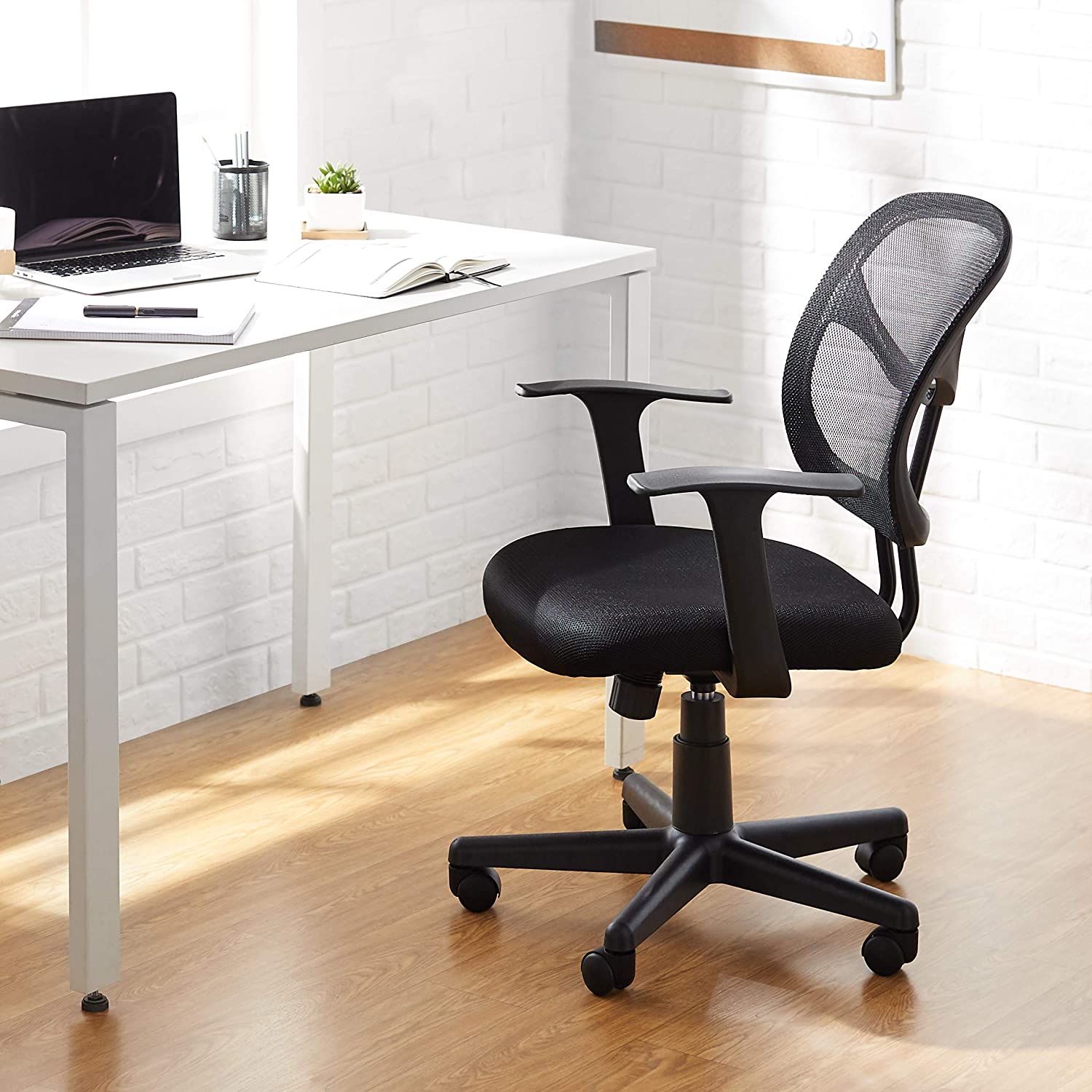Ergonomics and Small Spaces

Ergonomics, the science of designing the workplace to fit the worker, is paramount, even when space is limited. Ignoring ergonomic principles in your home office can lead to significant health problems, impacting both productivity and overall well-being. A small space doesn’t necessitate compromising comfort or health; it simply requires a more thoughtful approach to chair selection and workspace arrangement.
Best office chair for small space – Poor posture and inadequate support contribute to a range of musculoskeletal issues. Prolonged slouching can cause back pain, neck stiffness, and headaches. Lack of proper lumbar support can lead to spinal curvature problems, while insufficient armrests can strain shoulders and wrists. These problems accumulate over time, potentially resulting in chronic pain and reduced mobility. Investing in an ergonomic chair is an investment in your long-term health and comfort.
Posture Assessment and Ergonomic Needs Identification
Understanding your posture and identifying your specific ergonomic needs is the first step in choosing the right chair. This involves a systematic self-assessment.
Begin by standing against a wall, ensuring your heels, buttocks, and shoulders are touching the surface. Observe the natural curve of your spine. Ideally, your back should maintain a slight inward curve at the lower back (lumbar region). Next, sit in a chair without back support and observe your posture. Note any slouching or leaning. Do your shoulders round forward? Does your lower back lose its natural curve? These observations will help you identify areas requiring support. If you notice significant postural deviations, consulting a physical therapist or ergonomist may be beneficial for personalized recommendations.
Space Measurement for Chair Selection
Accurately measuring your available space is crucial to ensure the chosen chair fits comfortably without hindering movement. Begin by measuring the dimensions of your workspace.
First, measure the width and depth of your desk area. Next, measure the distance from the front edge of your desk to the nearest obstruction (wall, cabinet, etc.). Consider also the space required to move freely around your chair. A minimum of 30 inches (76 cm) of clearance is generally recommended. Finally, measure the height from the floor to the seat of your existing chair, or to your desired seating height (typically around 16-18 inches (41-46 cm) from the floor). This will guide you in selecting a chair with an appropriate seat height and dimensions that comfortably fit your space. Visualize the chair in the space, considering its overall dimensions and any potential obstructions, to ensure a practical and comfortable fit.
Essential Ergonomic Features for Small-Space Office Chairs, Best office chair for small space
Selecting a chair with the right ergonomic features is key, even within a limited space.
Prioritize these features when making your purchase:
- Adjustable Height: Allows you to customize the chair’s height to match your desk and ensure proper leg and foot positioning.
- Lumbar Support: Provides crucial support for the lower back, maintaining the natural curvature of your spine and reducing strain.
- Adjustable Backrest: Allows you to recline and change your posture, promoting better circulation and reducing pressure on your spine.
- Armrests (Optional, but Consider Space): If space allows, armrests can provide additional support and reduce shoulder tension. Choose armrests that allow for proper elbow positioning and don’t interfere with your desk space. Consider armless chairs for extremely tight spaces.
- Breathable Fabric: Ensures comfort and prevents overheating, particularly in smaller, less ventilated areas.
- Compact Design: Look for chairs with a smaller footprint to maximize the available space in your small office.
Budget-Friendly Options and Long-Term Value: Best Office Chair For Small Space

Choosing the right office chair, especially when space is limited, requires careful consideration of both immediate cost and long-term benefits. A balance between affordability and ergonomic support is key to ensuring comfort and preventing potential health issues associated with prolonged sitting. This section explores budget-friendly options, compares the long-term value of different price points, and provides practical tips for maximizing the lifespan of your chosen chair.
Budget-Friendly Office Chair Options for Small Spaces
Finding a comfortable and supportive chair without breaking the bank is entirely possible. The following table highlights three budget-friendly options, each suitable for smaller spaces and offering a good balance of features and value. Remember that prices can fluctuate, so it’s always advisable to check current pricing from multiple retailers.
| Chair Name | Price Range | Key Features | Value for Money Assessment |
|---|---|---|---|
| Flash Furniture Nicholas Contemporary Mesh Executive Swivel Office Chair | $100 – $150 | Mesh back for breathability, adjustable height, swivel function, modern design suitable for smaller spaces. | Excellent value for the price; offers essential ergonomic features without excessive cost. |
| Amazon Basics Mid-Back Mesh Office Chair | $70 – $120 | Breathable mesh back, adjustable height, simple design, lightweight and easy to move. | A very affordable option; ideal for those on a tight budget, though some may find the support less robust than higher-priced chairs. |
| Hbada Office Chair | $80 – $130 | Adjustable height and armrests, comfortable padded seat, sturdy construction, often available in various colors. | Good value for the price; offers a balance of comfort and functionality, making it a suitable choice for everyday use. |
Long-Term Value: Expensive vs. Inexpensive Chairs
While an inexpensive chair might seem appealing initially, investing in a higher-quality ergonomic chair often proves more valuable in the long run. A more expensive chair typically boasts superior materials and construction, leading to greater durability and longevity. This translates to fewer replacements over time, offsetting the higher initial cost. Furthermore, better ergonomic design minimizes the risk of developing back pain, neck strain, and other musculoskeletal problems associated with prolonged sitting. The cost of treating these conditions far outweighs the difference in price between a budget chair and a higher-end ergonomic option. Consider it an investment in your health and productivity.
Maintaining and Extending the Lifespan of Your Office Chair
Proper maintenance significantly extends the life of your office chair. Following these simple steps will ensure your chair remains comfortable and supportive for years to come.
- Regular Cleaning: Wipe down the chair with a damp cloth regularly to remove dust and dirt. For fabric chairs, vacuuming is also beneficial.
- Lubricate Moving Parts: Periodically lubricate any moving parts, such as the height adjustment mechanism and swivel base, with silicone spray or a similar lubricant. This prevents squeaking and ensures smooth operation.
- Adjust Properly: Ensure the chair is properly adjusted to your body’s dimensions. Incorrect posture puts unnecessary stress on the chair and your body.
- Avoid Overloading: Don’t exceed the chair’s weight capacity. Overloading can damage the chair’s structure and compromise its stability.
- Protect from Damage: Protect the chair from direct sunlight and extreme temperatures, which can fade or damage the materials.
